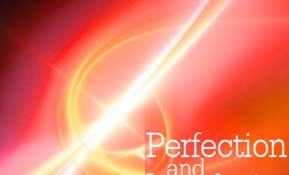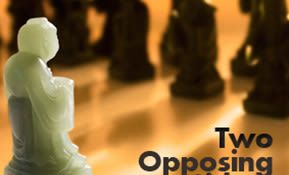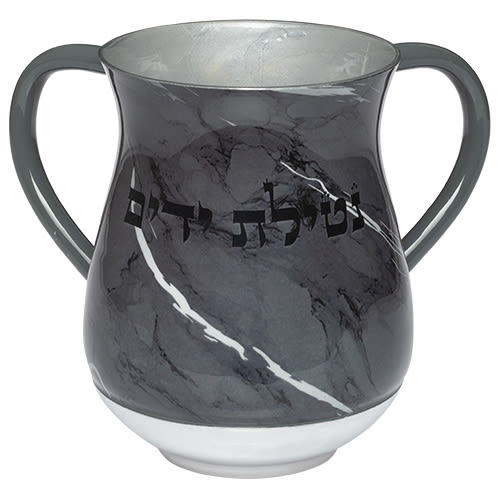
Malchut and Finite Worlds, Part 2
All that remains revealed after the Tzimtzum – the Residue - is spoken of as Malchut of Eyn Sof.

Part 34 of “138 Openings of Wisdom” by Rabbi Moshe Chaim Luzzato
Opening 26, Part 2
Having understood the analogous case, the relationship between Malchut and the higher Sefirot as manifested in the realms below, let us now apply this understanding to the subject of our present discussion, the upper level — the relationship between the Residue and the departed Light of Eyn Sof. For all that remains revealed after the Tzimtzum is spoken of as Malchut of Eyn Sof. In other words, all that departed — leaving only the specific power to create independent worlds and beings — may be considered parallel to the nine upper Sefirot as manifested in the lower realms. On the other hand, what remains after the Tzimtzum — created worlds and beings existing within bounds and limits — may be considered parallel to the Malchuyot of these nine Sefirot. And what is Malchut? The overall Malchut is the bond of all the powers found in the individual Sefirot to bring forth the lower worlds. Malchut is the general law that all the Sefirot should bring forth the lower realms and beings according to what is rooted within them.
We therefore call this light that is revealed in the Residue after the Tzimtzum “Malchut”, and we say that it is like the last part of all that departed, which we have compared to the nine higher Sefirot. Accordingly we call it a Residue of all that departed.
We must distinguish between two different aspects here. The bond of these parts, namely the law that the lower realms should exist — this being the overall Malchut in its proper place — we will term the Place or Space of the lower realms. This is the power that gives a place for their existence. But inasmuch as the overall Malchut is built of the residue of all that departed and includes the power contained in each Sefirah to bring forth the lower realms, we can term this the actual root of the lower realms.
These two aspects are also found in Malchut below. For Malchut is a “place” or “space” in the sense of providing the possibility for lower realms to exist. In addition to this, Malchut itself is also the individual root of each one of them, because the overall Malchut includes all the individual Malchuyot of all the other Sefirot.
…which because of its supreme greatness could not be apprehended. Here is the reason why we may call this a Residue even though it is not strictly in the same category as the light of Eyn Sof, which cannot be seen, while the light of the Residue has an end and a limit and can be seen. The reason is because there is a way in which they can be considered to come under one category. Since we have called Eyn Sof, blessed be He, “Simple Light”, and the light of the Residue is also light, if so they both come into the category of light, even though the one cannot be seen, while the other is visible light. For we may consider the ability to be seen a contingent occurrence in the Residue that could not apply to the first light.
This is supported by the point made earlier (Opening 5) that even in the case of the Sefirot, the ability to be seen is not intrinsic to their nature but was willfully instituted. He wanted the minimal power that constitutes the realm of limits and boundaries to be visible, while that which is beyond limits He did not want to be visible. Accordingly we apply the word Residue to the limited power subsumed within His limitless power. The Supreme Will wanted that this limited power should be capable of being seen.
One could object: Firstly, how can we say that what departed was nine Sefirot? Surely the Sefirot are limited, whereas what departed is without limits and if so, cannot be considered in the category of nine Sefirot? Further, the nine Sefirot are nine separate functions, whereas in the case of the Unlimited, it is impossible to speak of separate parts. If so, what departed was not nine Sefirot, for you cannot ascribe parts to the Unlimited. Clearly, there is no difference between one part and another except in virtue of the boundary that divides between them, whereas on the level of the Unlimited, the concept of boundary is not applicable in any way, and if so, it is impossible to speak of parts.
These objections may be answered as follows: It is true that the Sefirot are limited, while that which departed is without limits, and from this side we should not have compared what departed to the Sefirot. It is impossible to compare what departed, which is without limits, to these parts that remained, which fall within the category of limitation. Nevertheless, the nine Sefirot, although limited, do still give an indication of the Unlimited, while Malchut is actually on the boundary.
For the root of the matter is that the limited functions necessary for the entire existence of created realms and beings are in truth nine parts, which constitute the structure of Malchut itself. This is the pathway of limitation and boundaries that had been subsumed within Eyn Sof, as discussed earlier (Opening 24). However, the Unlimited overwhelmed each of these nine, bringing them back beyond limits. Thus we find here ten Sefirot: nine levels of limited action (e.g. the Malchut of each individual Sefirah: Malchut of Chessed, Malchut of Gevurah, etc.) all having one objective and all considered as constituting one Sefirah — the overall Malchut.
(Rabbi Avraham Greenbaum is the director of Azamra (http://www.azamra.org/).
The 138 Openings of Wisdom is available for purchase online at http://www.azamra.org/Product_pages/openings.htm)












Tell us what you think!
Thank you for your comment!
It will be published after approval by the Editor.